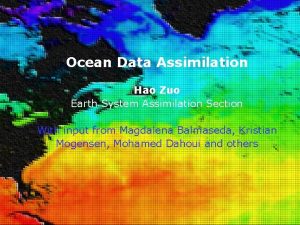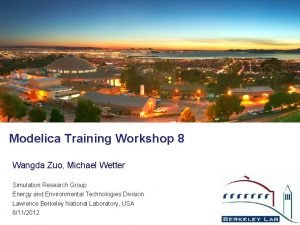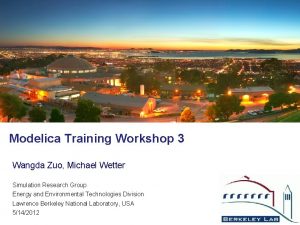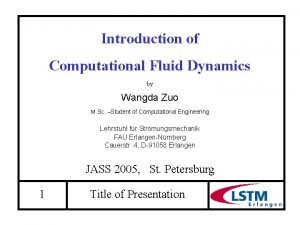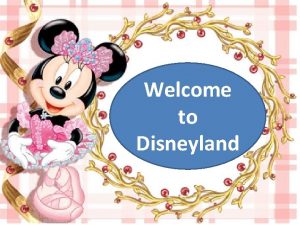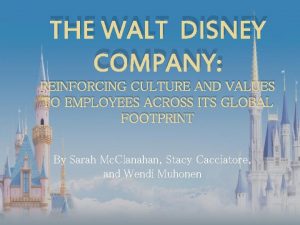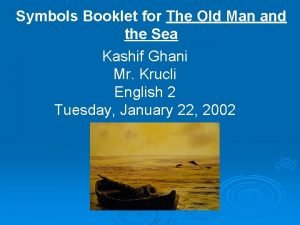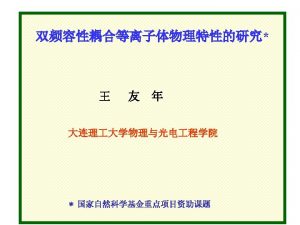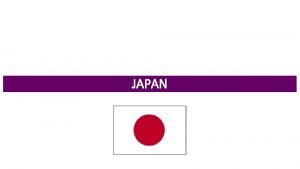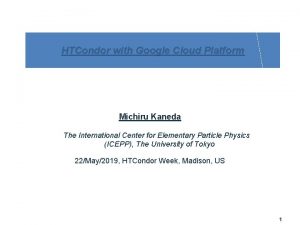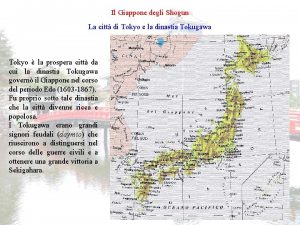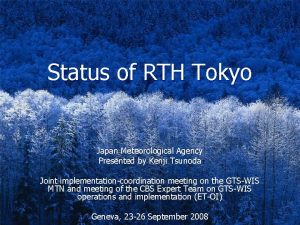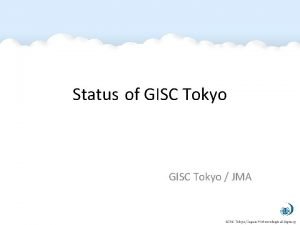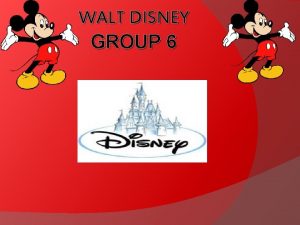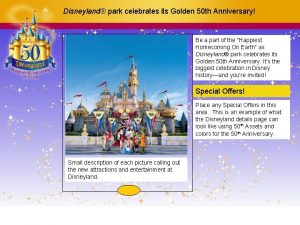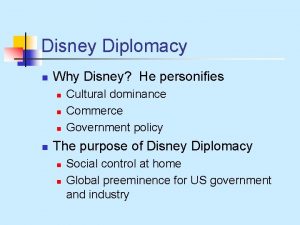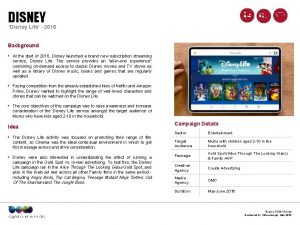Tokyo Disneyland the Disney Sea Park Mijia Zuo

































- Slides: 33

Tokyo Disneyland the Disney. Sea Park Mijia Zuo Yiming Xie Yutong Xiang Xinyue Luo

Agenda · INTRODUCTION TO DISNEYSEA PARK PROJECT · FINANCIAL ASSUMPTIONS · CAPITAL BUDGETING TECHNIQUES · COMPARISONS Mijia Zuo Yiming Xie Yutong Xiang Xinyue Luo

Mijia Zuo Yiming Xie Yutong Xiang Xinyue Luo

The Original Tokyo Disneyland · April 1979 Oriental Land Corp. (OL) signed a license agreement with the Walt Disney Company (WD). 10% on admission fees and 5% on food beverages and novelty goods. · December 1980 The construction of Tokyo Disneyland began in Maihama District. · April 1983 Tokyo Disneyland opened its doors for business. Mijia Zuo Yiming Xie Yutong Xiang Xinyue Luo

The Competitor: Mitsubishi Estate Group · They offered WD 2450 acres in exchange for WD’s construction of Disneyland · The two companies ended up with no agreement. · OL accepted the conditions knowing that it would be hard for them to operate profitably Mijia Zuo Yiming Xie Yutong Xiang Xinyue Luo

Success of Tokyo Disneyland · the number of visitors never went below 10 million per year; they peaked in 1998 with 17, 45 million · 75 % of the attendance was from repeated visitors · 70 % of the park’s visitors were from neighbourhoods around Tokyo · 7000 ¥($59. 31 US)as the estimated average of expenses per visitor Mijia Zuo Yiming Xie Yutong Xiang Xinyue Luo

Issue: New Attractions to Maintain Repeat Customers · Most of customers were repeat customers. However, there was concern that customers would eventually get bored with the existing attractions and facilities, resulting in a severe shortage of customers. · OL received an inquiry from their licenser, the Walt Disney Company, suggesting to build a new entertainment park: the Disney. Sea Park. Mijia Zuo Yiming Xie Yutong Xiang Xinyue Luo

Basic Information about the New Project · Geographical & Cultural Basis: · Large Investment: ¥ 400 billion ($3. 4 Island country with attachment to sea billion) · Target Audience: adults who had been · Form of Cooperation: WD hoped to children when Tokyo Disneyland was continue the licensing fee format while OL introduced. strongly opposed it. Mijia Zuo Yiming Xie Yutong Xiang Xinyue Luo

New Project: Disney. Sea Park Initial investment: ¥ 400 billion (US $ 3. 4 billion) OL’s total assets: ¥ 355. 18 billion (US $ 1. 77 billion) Annual EBT: ¥ 28. 32 billion (US $ 0. 24 billion) Major Concerns: how long it would take for the Disney. Sea Park to start generating profits; if the company’s current profit earning capability would be able to sustain the investment period Mijia Zuo Yiming Xie Yutong Xiang Xinyue Luo

Position of Various Stakeholders Mitsui Real Estate Group (MREG): Industrial Bank of Japan (IBJ): · critical of the long contract term · shifted its lending targets and willing · objected to 10% license fee · concerns about the risk-sharing on the to lend to OL. · total bank loans amounted to ¥ 195 billion (US $ 1. 65 billion) part of WD. · closely involved in companies’ internal affairs. Mijia Zuo Yiming Xie Yutong Xiang Xinyue Luo

Position of Various Stakeholders · Chiba prefecture (Landlord): Stockholders at Tokyo Stock Exchange: · thought OL proposed an exaggerated · OL was listed on the Tokyo Stock Exchange request of land. In 1996 with its closing price on the first day · eventually granted 750, 000 tsubo of land. of IPO being ¥ 8, 850 a share, exceeding 9% · public welfare and consideration of of its offered price. employment. · Later evaluation disappointing: stock price of ¥ 8, 000 than initial ¥ 8, 055 Mijia Zuo Yiming Xie Yutong Xiang Xinyue Luo

Financial Assumptions without the New Project Number of visitors: remain the same Admission fees: increase by 2% annually Operating costs: 67% of sales; Administrative: 7% of sales; Other Expenses: 4% of sales Tax Rate: 43% Mijia Zuo Yiming Xie Yutong Xiang Xinyue Luo

Financial Assumptions with the New Project Number of visitors: 30% increase in 2002, 10% increase in 2003 and 2004 Admission fees: 2% increase in the following four years; 15% in 2002; 10% 2003; same in 2004 Operating costs other than depreciation, administrative, other expenses, tax rate: same assumptions Mijia Zuo Yiming Xie Yutong Xiang Xinyue Luo

Depreciation Assumptions Depreciation Conducted using straight-line method over 20 years Mijia Zuo Yiming Xie Yutong Xiang Xinyue Luo

Difference in Interest Payment Mijia Zuo Yiming Xie Yutong Xiang Xinyue Luo

Projected Income and Cash Flow of the New Project Mijia Zuo Yiming Xie Yutong Xiang Xinyue Luo

Capital Budgeting Techniques ● Net present value (American NPV) ● Internal rate of return (American IRR) ● Average accounting return (AAR) Mijia Zuo Yiming Xie Yutong Xiang Xinyue Luo

Net Present Value Mijia Zuo Yiming Xie Yutong Xiang Xinyue Luo

Net Present Value WACC=5. 65% Mijia Zuo Yiming Xie Yutong Xiang Xinyue Luo

Terminal Value Terminal value represents all future cash flows in an asset valuation model. This allows models to reflect returns that will occur so far in the future that they are nearly impossible to forecast. Terminal value = Cash flow of the fifth year / discount rate Total value= the terminal value+the net operating cash flow(5 th year) =4581. 9 Mijia Zuo Yiming Xie Yutong Xiang Xinyue Luo

Initial Investment Mijia Zuo Yiming Xie Yutong Xiang Xinyue Luo

Net Present Value Together with the initial investment in 2000 and the terminal value, the net cash flow was presented in the table below. It was calculated by adding income after tax with depreciation. A five-year cash flow for the period 2000– 2004 was projected, of which the summary was as follows: Mijia Zuo Yiming Xie Yutong Xiang Xinyue Luo

Net Present Value ● IRR-----8. 55% ● NVP------446. 04 $million Mijia Zuo Yiming Xie Yutong Xiang Xinyue Luo

Average Accounting Return We need 3 steps to calculate AAR: ● step 1: Determining average net income ● step 2: Determining average investment (book value) ● step 3: Determining average accounting return Mijia Zuo Yiming Xie Yutong Xiang Xinyue Luo

Average Accounting Return Step 1: If we assume the project has a useful life of 20 years, based upon our income projection in the cash flow, the average net income over the next five years should be: Mijia Zuo Yiming Xie Yutong Xiang Xinyue Luo

Average Accounting Return Step 2: The average value of the total investment over the five years for OL is the average of the projected fixed assets (book value) of each of the five years: Mijia Zuo Yiming Xie Yutong Xiang Xinyue Luo

Average Accounting Return Step 3: ARR= Mijia Zuo Yiming Xie Yutong Xiang Xinyue Luo

Accept or Reject? ● NPV - Yes 445. 8 Million > 0 ● IRR - Yes 8. 55% > Hurdle Rate 5. 65% ● AAR - No -1. 05% < 0 Mijia Zuo Yiming Xie Yutong Xiang Xinyue Luo

Different Decisions ● NPV and IRR ○ Best approaches established in US ○ CFs are used ○ The time value of money is accounted ● AAR ○ Common method used in Japan ○ No depreciation expense added ○ CFs after operating period are not accounted ○ No salvage value Mijia Zuo Yiming Xie Yutong Xiang Xinyue Luo

A Combined Method ● ACFR = (average cash flow + BV of fixed assets at the end of project) / initial investment ● Considers both cash flow and terminal value of the project ● Result: ACFR = 19. 1% > 0 project Mijia Zuo accept Yiming Xie Yutong Xiang Xinyue Luo

Difference in Corporate Governance ● Maximizing shareholder wealth ● Emphasis on shortterm interests ● Open to change ● Maximizing stakeholder wealth American NPV Mijia Zuo Japanese AAR Yiming Xie ● Emphasis on longterm interests ● Adhere to traditional, not open to change Yutong Xiang Xinyue Luo

Effect on Metric Choice Anglo-American Japanese Maximize shareholders wealth Maximize stakeholders wealth Maximize return of each project Maximize corporate net income Emphasis short-term interest Emphasis long-term interest Focus on cash flow of the project Focus on net income of the company Use NPV Use AAR Use NPV Mijia Zuo Yiming Xie Yutong Xiang Xinyue Luo

 Tokyo disneyland earthquake
Tokyo disneyland earthquake Hao zuo
Hao zuo Wetter workshop
Wetter workshop Wetter workshop
Wetter workshop Wangda zuo
Wangda zuo Zuofeng zhang
Zuofeng zhang Jin tian ji hao meaning
Jin tian ji hao meaning Peter pan background
Peter pan background In-demand tickets
In-demand tickets Welcome to disneyland
Welcome to disneyland Have you ever been to disneyland
Have you ever been to disneyland Disney's organizational culture
Disney's organizational culture Have you ever been to a museum
Have you ever been to a museum Have you ever been to a museum
Have you ever been to a museum Sea stump
Sea stump What is asias largest desert
What is asias largest desert Troy aegean sea
Troy aegean sea Jellyfish and sea anemone
Jellyfish and sea anemone What does the sea symbolize in the old man and the sea
What does the sea symbolize in the old man and the sea Brush mountain park orchard park
Brush mountain park orchard park Quartier tokyo
Quartier tokyo Frecombo
Frecombo What is the currency of tokyo
What is the currency of tokyo Gcp
Gcp Shogun tokyo
Shogun tokyo Cholcystectomie
Cholcystectomie Tokyo meteorological agency
Tokyo meteorological agency Qgp
Qgp Greater tokyo population
Greater tokyo population Tokyo artificial larynx
Tokyo artificial larynx Slidetodoc
Slidetodoc Gisc tokyo
Gisc tokyo British football academy tokyo
British football academy tokyo Climograph of bangkok
Climograph of bangkok

